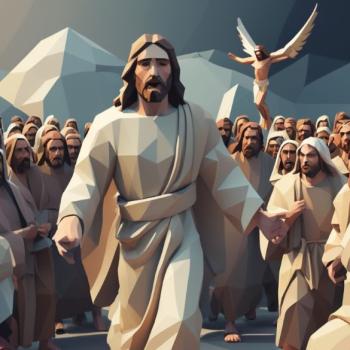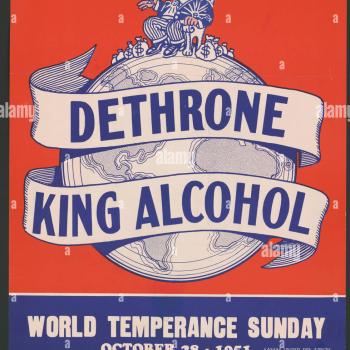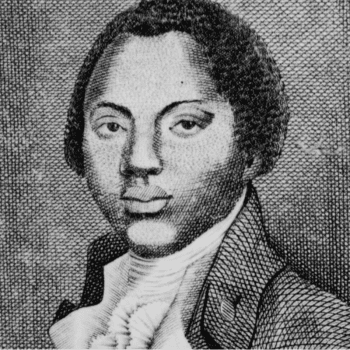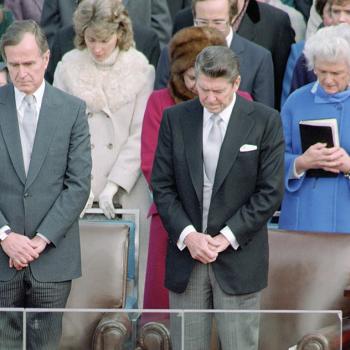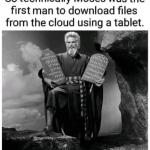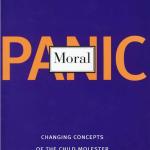Last week, the Church of Jesus Christ of Latter-day Saints made national and international news by releasing photographs of a seer stone used by Joseph Smith during the coming forth of the Book of Mormon.
For some contemporary Latter-day Saints and for some outside critics of the church, the fact that Joseph Smith used a seer stone is controversial. Ironically, some of Joseph Smith’s earliest followers objected when he stopped using a seer stone.
Smith used several seer stones during his work on the Book of Mormon, and apparently also for some of his earliest revelations (between 1828 and 1833, Smith dictated scores of divine messages, most in the voice of Jesus Christ). See this summary, recently released by the LDS Church.
At a certain point, though, perhaps shortly after the Book of Mormon translation was complete in June 1829, Smith stopped using a stone as a conduit for his revelations. David Whitmer, who alongside his father and brothers was one of Smith’s earliest supporters, later concluded that once Smith set aside his seer stone, his subsequent revelations were “of the Devil.”[1]
In September 1830, church member Hiram Page (husband of David Whitmer’s sister) challenged Smith’s authority with a “roll of papers,” revelations he had received through a seer stone. Page’s claims raised the specter of prophetic chaos. What was the relationship between magical objects and prophetic authority? Did Smith need them? Did others with such artifacts receive valid revelations? Apparently Oliver Cowdery (Smith’s principal Book of Mormon scribe) and the Whitmers were pondering the validity of Page’s “papers.”
In response to the challenge, Smith dictated a revelation that clarified that “no one shall be appointed to Receive commandments & Revelations in this Church excepting my Servent Joseph.” Oliver Cowdery, Smith’s principal Book of Mormon scribe, had previously sought the ability to translate like Smith. This revelation added that Cowdery would serve as Aaron to God’s latter-day Moses but would himself “not write by way of Commandment.” Hiram Page received a harsher rebuke. The “things which he hath written from that Stone,” the Lord stated, “are not of me & … Satan deceiveth him.” Through this revelation, Smith affirmed that no objects were necessary as conduits for revelation and that his prophetic authority was unique.[2]
A church conference toward the end of September 1830 affirmed the recent revelation and affirmed Smith’s as “seer, a translator, a prophet, an apostle of Jesus Christ.” Newel Knight, an early convert, commented that “Brother Page, as well as the whole church who were present, renounced the said stone, and all things connected therewith, much to our mutual satisfaction and happiness.”[3]
It is interesting that as time passed, it became more difficult for some Latter-day Saints to accept that their founding prophet used a seer stone, both in search of buried treasures and as a conduit for revelation. In the early 1830s, some of Smith’s followers had been just as skeptical that he could receive revelations without a stone.
The September 1830 revelation and conference did not fully settle the issue of revelatory authority. A prophetess challenged Smith’s authority the next year with revelations of her own. Over the course of Mormon history, other would-be prophets have challenged church leaders with claims of revelation. In the mid-1840s, James Strang mocked Brigham Young for his unwillingness to produce written revelations. In the 1850s, Lydia Farnsworth wrote Young that she had obtained a revelation that she should marry him. “When I wished to have any woman sealed to me,” Young responded in a letter, “I shall reveal the fact. I am not guided by revelations coming through any woman.” (Fourteen years later, Young – apparently no longer offended – did marry Farnsworth). Members and outsiders alike sometimes wonder why contemporary Latter-day Saint leaders no longer bring forth the “word of the Lord” as did Joseph Smith and some of his successors. Prophetic authority – hard to define, hard to confine.
[1] Whitmer, An Address to All Believers in Christ…(Richmond, Mo.: David Whitmer, 1887), 54.
[2] Revelation of September 1830 to Oliver Cowdery, D&C 28:2.
[3] Richard Bushman, Joseph Smith: Rough Stone Rolling (New York: Knopf, 2005, 120-121).






